NASA Releases New Vivid Images Of The Pillars of Creation 7,000 light-years from Earth
Right when you thought Pillars of Creation couldn't be more fascinating, NASA's James Webb Space Telescope captured a fresh view of the famous celestial sight. If you're not up to speed, The Pillars Of Creation are an eye-pleasing star formation region. They show newborn stars and the new images are even able to reveal new details of this astonishing cluster of dust and gas.
The latest cosmic photos are an impressive step forward in making sense of the universe and expanding our understanding of us beyond what we see around us. The universe is bigger than we can even conceptualize and we might never fully grasp it, but with every new discovery, we understand where we all fit into it a little more.
Take a quick zodiac reading here to find out what the universe has to say about you right now.
The Pillars Of Creation
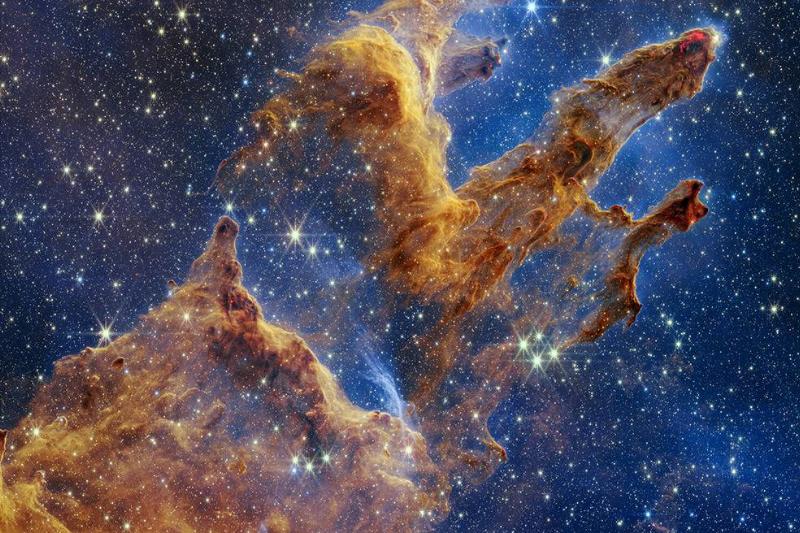
Pillars of Creation is a photo taken by the Hubble Space Telescope to capture the elephant trunks of interstellar gas and dust in the Eagle Nebula. What makes images like these fascinating is that they technically allow us to travel back in time. In this instance, we go back to the Serpens constellation, some 6,500–7,000 light-years from Earth.
Keep in mind that light years work a lot differently than human Earth years. Even if we were on a space shuttle, which can travel 5 miles a second, it would take us about 37,200 years to go just one light-year. Now imagine 7000 of them.
The Pillars of Creation earned their name because of their process of using gas and dust to create new stars, while simultaneously consuming the light of the nearby stars that recently formed.
Most Celebrated Images of Modern Austronomy
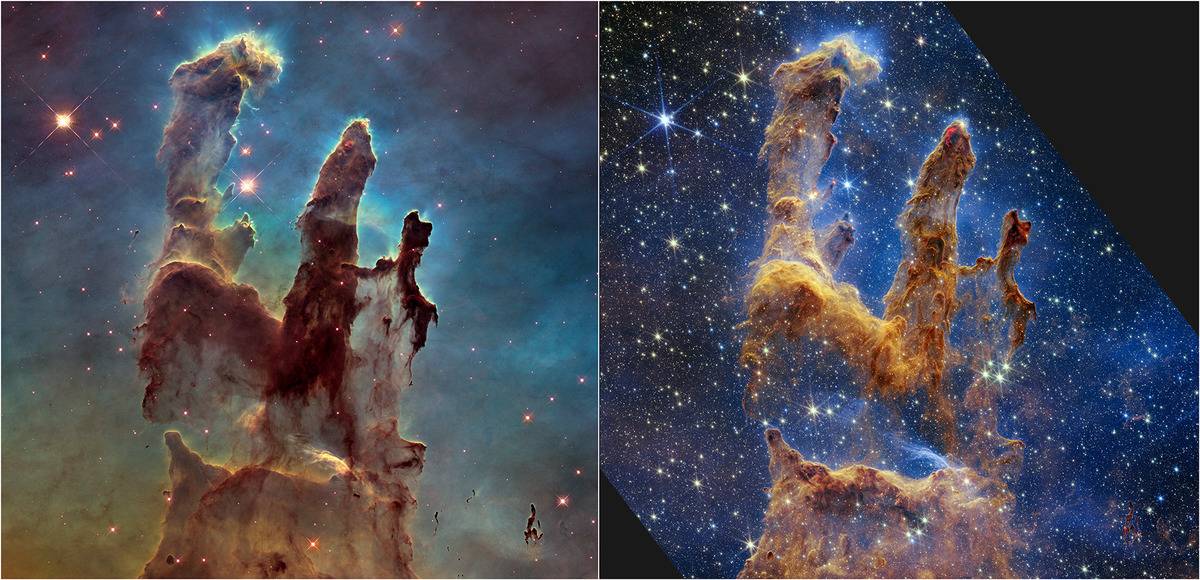
The Pillars of Creation are some of the most astonishing and celebrated images of modern astronomy. They bring us a visual understanding of the fascinating life cycle of the stars, even though we can't see stars in real time. Because they're so far away, the stars we see at night are already dead.
Seeing something as it once were is not only poetic but the subject of scientific curiosity. What do we look like to those stars? And what does that say about our concepts of time and space as a continuum?
We may not have all those answers yet, but having these updated images at least gives us greater depth, clarity, and color on the world of stars.
The First Capturing Of The Young Stars, Gas & Dust
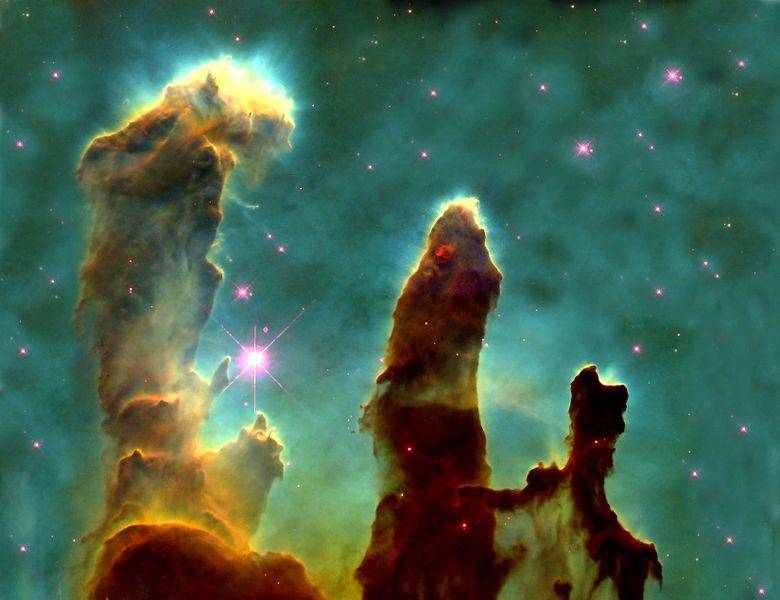
This image was first taken on April 1, 1995, and it was named one of the top ten photographs from Hubble by Space.com. The first image was captured by Webb's predecessor observatory, the Hubble Space Telescope. These images were taken only three months after Webb began full operations.
The images show wide, tall columns of dense clouds of gas and dust where young stars are forming in a region of the Eagle Nebula, in the Serpens constellation, some 6,500 light-years from Earth with fascinating detail.
Objects Of Worldwide Fascination
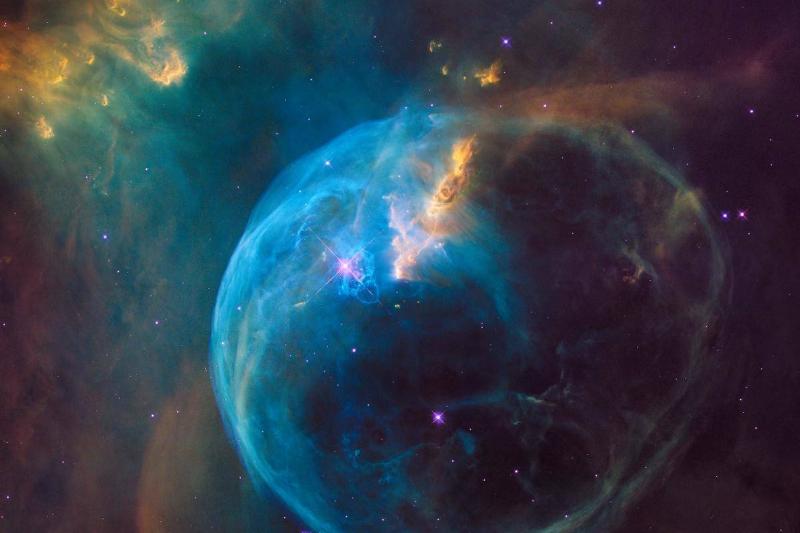
The images have caught the attention of scientists and average people alike, with some referring to them as "spellbinding." David Grinspoon, an astrobiologist at the Planetary Science Institute, called the new Webb image "just spectacular beyond words." sharing a tweet where he adds: “Oh. My. Universe.”
The images are famous worldwide, becoming a cultural phenomenon with the images printed on just about everything from t-shirts to coffee mugs.
Why Does It Matter?
The new view matters for a couple of reasons. For NASA it will "help researchers revamp their models of star formation by identifying far more precise counts of newly formed stars, along with the quantities of gas and dust in the region," they said in the material accompanying the image.
Observations from telescopes like the Webb Telescope can help astronomers better understand the process of how the universe works, star formation, and perhaps redefined how we make sense of time, space, and our place within the universe.
These findings wouldn't be possible without today's advanced technology. The tennis court-sized observatory is equipped with instruments that detect distant stars and galaxies in infrared and near-infrared light. These sightings wouldn't be possible within the range of human sight.
Naturally, such a process is not cheap. The Webb Observatory cost about $10 billion when it was launched in 2021. However, has already paid off with the release of images like this that reveal fascinating details about the universe with great translucency.
What Are They?
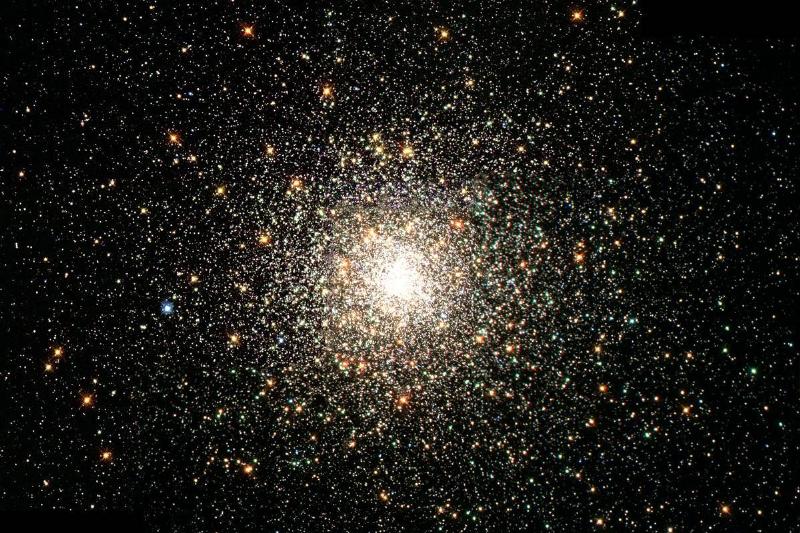
So what exactly are we looking at when we observe these images? "See those wavy lines that look like lava at the edges of the pillars? These are baby stars that are forming within the gas & dust," explains David Grinspoon in his tweet.
The bright red orbs that appear just outside of the pillars are actually infant stars. they happen as the result of the giant knots of gas and dust that collapsed under their own gravity. As they heat up, they give birth to new stars. These ejections of matter from stars might only be a few thousand years old according to the U.S Space agency.
How Did We Do It?
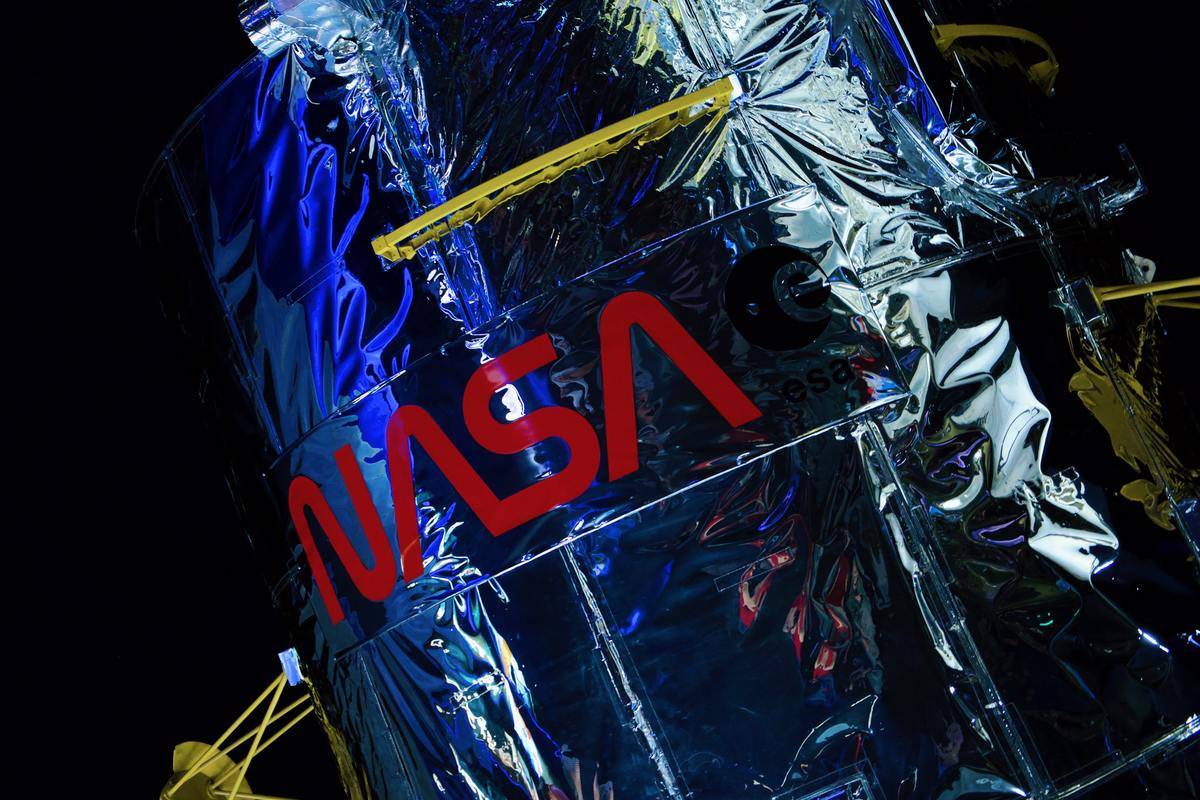
These findings and captures are all thanks to the James Webb Space Telescope, a space telescope that conducts infrared astronomy. This is the largest optical telescope in space and was designed to have high resolution and sensitivity to allow it to view objects too old, distant, or faint for its predecessor, the Hubble Space Telescope.
It took almost two decades to make this telescope for NASA by aerospace giant Northrop Grumman Corp. $9 billion later, it was launched into space on Dec. 25, 2021, in partnership with the European Space Agency and the Canadian Space Agency.
How It Impacts The Future
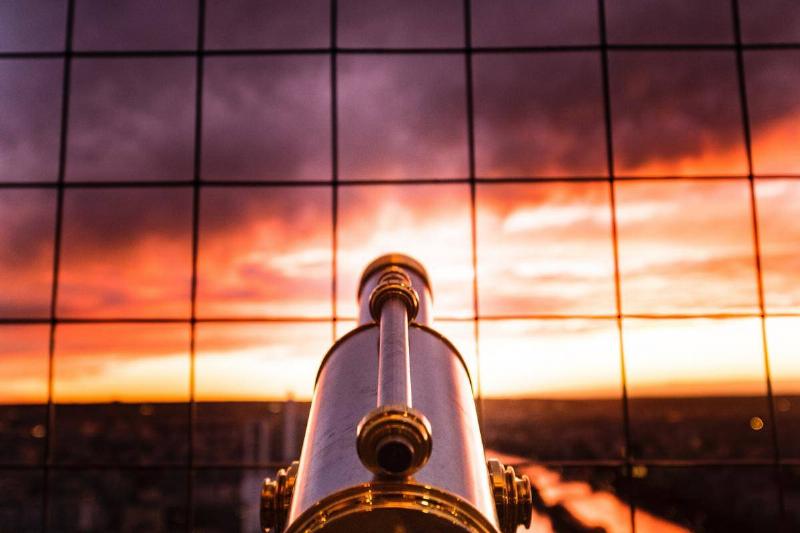
The future is bright but it's also unknown. We have no way of predicting what happens next in our own individual lives, let alone what's in store for the universe itself. For now, we can observe the process of stars as it already has happened light years away. We have no idea what is happening in real-time and with the technology we have now, the answer might not be possible for thousands of generations ahead.
For now, we have the James Webb Space Telescope which has only been in the solar orbit, nearly one million miles from Earth, since 2021. But if this is what it was capable of in just three months, it is expected to revolutionize astronomy by allowing scientists to expand into the cosmos farther than before and with greater precision, discovering beyond the known universe.
Where Do You Fit In The Universe?
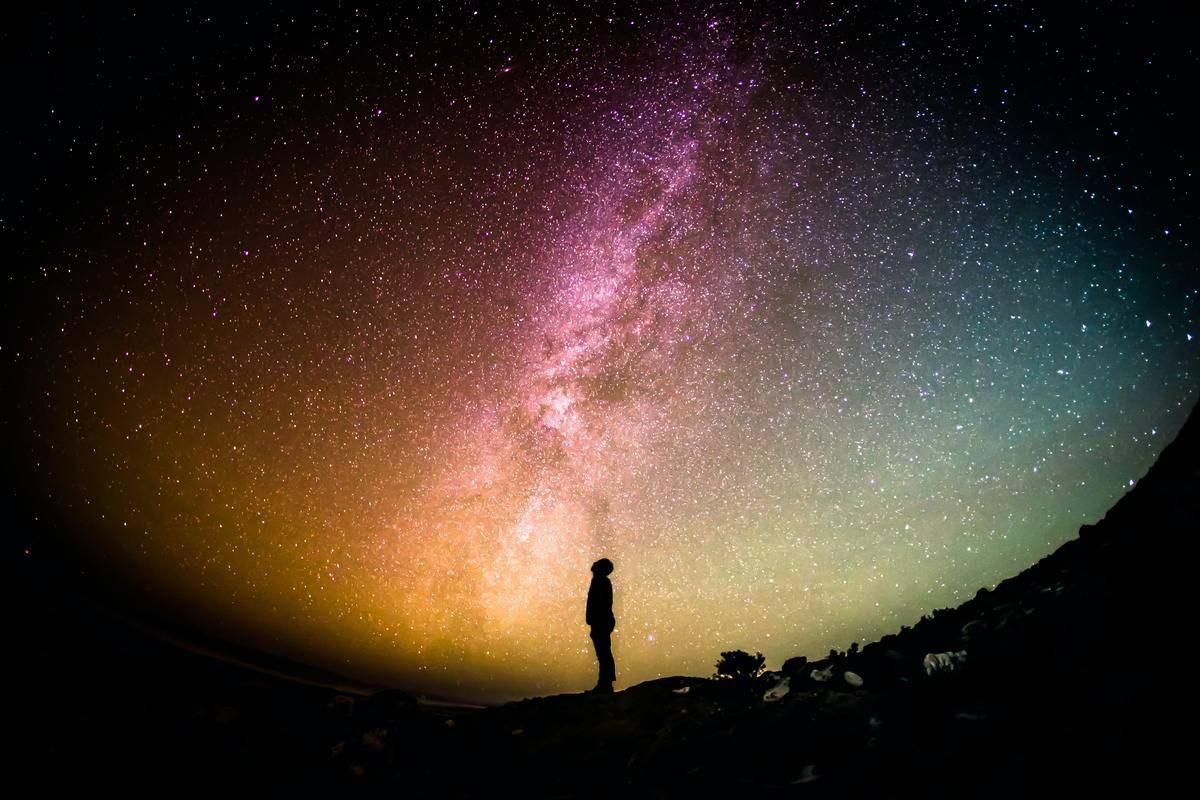
We spend our lives wondering how much space we're meant to take in this world, why we exist in it, and how we can matter. We know one day we will be gone but we don't want our lives to be simply forgotten and become meaningless. So, we try to leave behind a legacy, or some sort of change that would be remembered by generations to come.
Are you still searching for your life purpose? You won't believe what the science of Numerology can reveal about you!
That's right, the numerology of your birth date, regardless of what month you were born, can reveal surprising information about your personality.
Click HERE to learn what Numerology says about your life using only your Birth Date.
Unlock the messages hidden in your Personality Code now with your free personalized video report!





